One of the most sought-after coin series in the United States is the Lincoln Wheat pennies. Because of its value, coin collectors aim to acquire the full collection. 1928-dated Lincoln Pennies are significantly more valuable than their face value.
The age, condition, and historical significance of the coin all contribute to this. When these factors are taken into consideration, it is easy to see why 1928 Lincoln Pennies are considered a must-have by most collectors. Let’s read on to find out more about its history, value, grade, and errors!
1928 Wheat Penny Details
- Type: Lincoln Cents
- Quantity Produced: 182,552,000
- Designer: Victor David Brenner
- Edge: Plain
- Shape: Round
- Coin Diameter: 19mm
- Coin Thickness: 1.4mm
- Coin Weight: 3.11g
- Year of Minting: 1928
- Mint Mark: None/S/D
- Place of Minting: Philadelphia, San Francisco, Denver
- Face Value: $0.01
- $ Price: $0.25 – $45,600
In 1928, three wheat cent varieties were struck. The year was considered a common one among these types of coins, which is evident in the abundant availability of one-cent coins.
Tens of millions of 1928 Wheat Pennies were produced at the three mints that were operating at the time. These were the Philadelphia, Denver, and San Francisco Mints. According to the mintage numbers for Lincoln Pennies from 1928, Philadelphia produced far more cents compared to the other two.
The Wheat Penny was designed by Victor David Brenner, and these pieces were struck with 95% copper until 1943. The coin’s obverse features the image of former President Abraham Lincoln which is shown in full detail and is raised from the penny’s face.
The left side of the President features a raised inscription with the words “LIBERTY”, while its year of minting is set to the right of his image. Arching at the top of his image is a raised inscription that says “IN GOD WE TRUST”.
A raised inscription that indicates the coin’s face value of “ONE CENT” takes up most of the coin’s reverse. Another inscription that says “UNITED STATES OF AMERICA” is also positioned in the center.
There are two wheat stalks present. These are on either side of the central inscriptions, which are to the left and the right. The Lincoln Penny earned the moniker “Wheat Penny” because of them. The Latin phrase “E PLURIBUS UNUM,” which is historically used on American coins, arches over the topmost portion of the coin.
You can find its mint mark on the coin’s obverse, specifically below the date. Since the piece was minted in three different areas, the coins had specific letters to depict its mint location.
D was for coins produced in the Denver Mint while those from San Francisco featured an S. Coins that were minted in the Philadelphia Mint did not feature any mint marks.
Also Read: Top 20 Most Valuable Old Pennies Worth Money (Penny Collection)
1928 Wheat Penny Coin Value Chart
| Coin Grade | Good | MS63 | MS65 | MS66 |
| 1928 Wheat Penny Coin | $10 | $30 | $100 | $1,500 |
| 1928 D Wheat Penny Coin | $20 | $100 | $2,000 | $8,000 |
| 1928 S Wheat Penny Coin | $10 | $200 | $3,500 | $30,000 |
1928 Wheat Penny Value and Varieties Guides
These pennies are somewhat easily available in circulated grades up to the mid-range MS uncirculated grades. When you get the highest grades for the piece, its value will likely come at a premium.
Wheat Pennies that were minted in Philadelphia were usually attractive and well-struck. So, it should be quite easy to find a stunning coin to include in your collection.
Generally, the 1928 Pennies from all the mints can be acquired for less than 50 cents each in the lowest circulated grades. Then when you approach the uncirculated grades, you will see a huge variation in their value.
In MS+ or uncirculated mint conditions, the pennies can be worth about $11 to $17 or even higher. Its value can also range depending on color. Coins that are in full red and in higher grades will always require a higher price since these are more sought after.
1928 Wheat Penny Coin
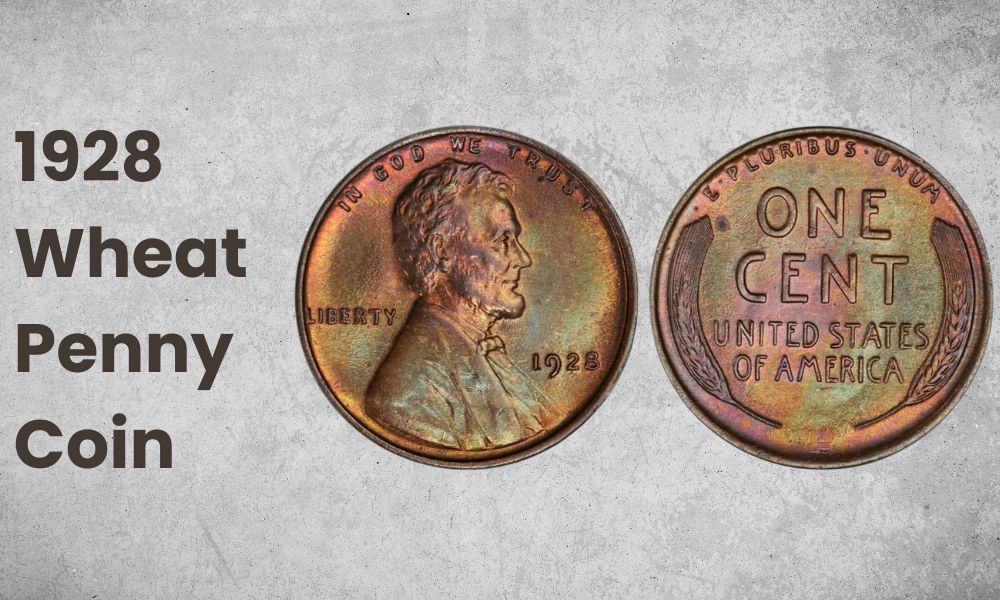
- Type: Lincoln Cents
- Edge: Plain
- Mint Mark: None
- Place of Minting: Philadelphia
- Year of Minting: 1928
- Face Value: $0.01
- $ Price: $0.25 – $9,000
- Quantity Produced: 134,116,000
- Designer: Victor David Brenner
The 1928 Lincoln Cent is an extremely common piece in all circulated grades, and in MS65 conditions or lower, these are fairly affordable.
Those without mint marks are worth about 25 cents in good condition, while pieces in very fine condition are valued at 60 cents. For coins with extremely fine conditions, the value goes around $2. However, those in uncirculated conditions are priced around $10 for pieces with an MS60 grade.
Although it starts to cost significantly more in MS66 than in MS65 conditions, there are still hundreds of samples in existence. When the piece is in MS67 condition, it becomes more challenging to acquire and also costs a lot more.
Any Lincoln cent that is graded higher than MS67 is typically for very devoted collectors. And the thing is, you should be prepared to pay a high price for any sample that is MS67+ or higher.
The auction record for this coin is $9,000, which was sold in 2019. It is a red coin with MS67 grading. However, due to the high quality minted, the average sale price is a lot less at around $1,500.
1928 D Wheat Penny Coin
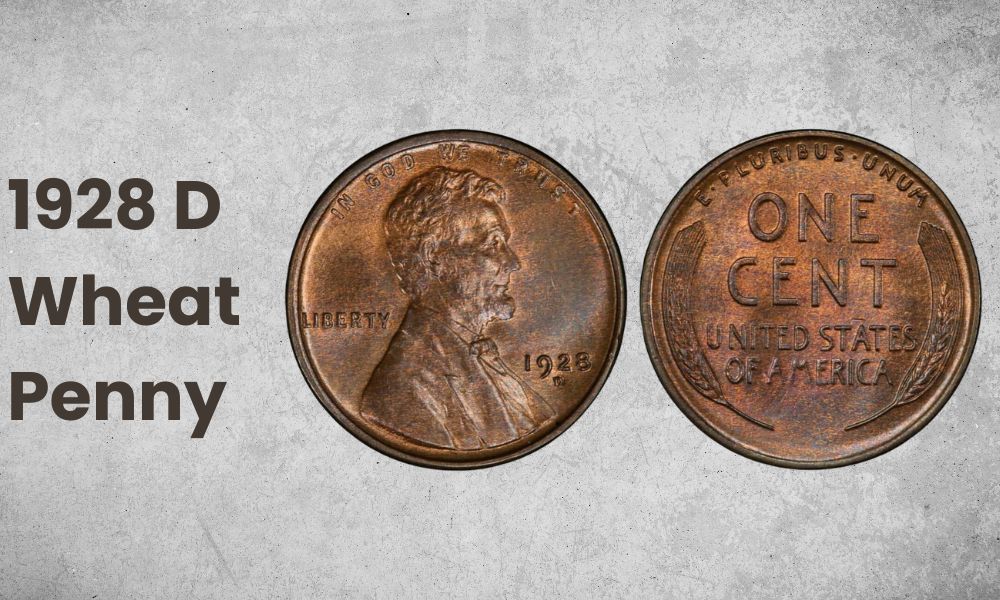
- Type: Lincoln Cents
- Edge: Plain
- Mint Mark: D
- Place of Minting: Denver
- Year of Minting: 1928
- Face Value: $0.01
- $ Price: $0.75 – $12,600
- Quantity Produced: 31,170,000
- Designer: Victor David Brenner
The majority of Denver’s 1928 cents were in circulation for a long time, and the ones found today typically have heavy wear. These coins continue to pique the interest of collectors, but they prefer well-preserved examples.
In good condition, the 1928 D Wheat Penny is worth about 75 cents, while its value in very good condition is about $3. The piece is worth around $6 in exceptionally good condition. Coins with an MS60 grade costs about $50 in uncirculated conditions. Then, the pieces with an MS63 grade and uncirculated can be purchased for about $100.
The circulated grades of the 1928 D Lincoln Cent are widely distributed, and samples can also be found in some lower uncirculated grades.
However, it becomes much more difficult to find pieces in MS65 condition, and anything above MS65 is extremely hard to acquire. Moreover, samples in this condition are typically reserved only for the most ardent collectors.
The auction record for a D is $12,600, which was sold in 2022. Before that, it was $12,120 in 2020. The reason for the higher sales is that there were less than 25% of these coins minted when compared to Philadelphia, to those in perfect condition are rare.
The average sale price for a 1928 Denver penny is around $8,000. However, the coins minted in San Francisco are even rarer.
1928 S Wheat Penny Coin
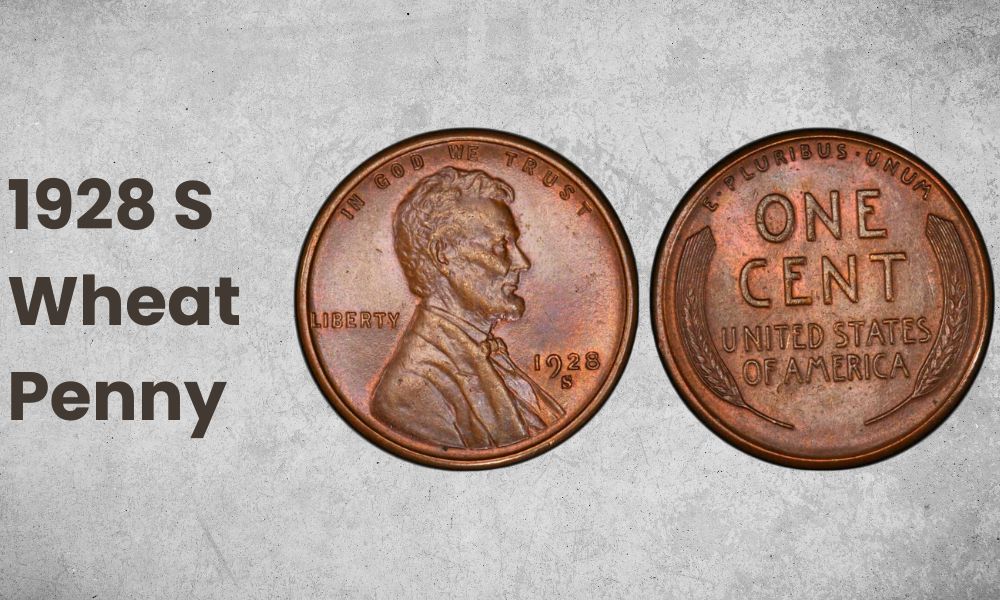
- Type: Lincoln Cents
- Edge: Plain
- Mint Mark: S
- Place of Minting: San Francisco
- Year of Minting: 1928
- Face Value: $0.01
- $ Price: $2 – $45,600
- Quantity Produced: 17,266,000
- Designer: Victor David Brenner
The least common of the three 1928 varieties is San Francisco pennies. Technically, there are two types of 1928 S Lincoln Wheat Penny coins produced by the San Francisco Mint.
These are the 1928 S large mint mark and the 1928 S small mint mark variety. Although neither 1928 S Cents are currently worth more than the other, the two varieties keep coin collectors, especially Lincoln Penny enthusiasts, on their toes.
1928 S Wheat Pennies are available in high grades, and a lot of pieces feature red-brown and full-red surfaces. This issue is among the few remaining San Francisco cents with sharp details, a great strike, and immense eye appeal.
The record for the 1928 S Wheat Penny is an MS66 piece sold for a mind-blowing $45,600 in 2020. Expecting the average price to be much less? Well, it isn’t far off, as you can expect any MS66 coin to sell for at least $30,000 given how rare they are.
1928 Wheat Penny History
The 1928 Wheat Penny is a part of the Lincoln Cent series, which dates back to 1909. The series was created in memory of what would have been his 100th birthday. While it has gone through a few changes, the series is still minted today.
In 1904, Leslie Mortier Shaw, the Secretary of the Treasury, received a letter from Theodore Roosevelt, who complained that American coinage lacked artistic merit. He asked Shaw if it was possible to commission a private artist, such as the sculptor Augustus Saint-Gaudens, to create new coin designs.
Saint-Gaudens was hired by the mint to redesign the cent and the four gold coins at Roosevelt’s request. Since the designs of those items had not changed in 25 years, they could be altered without any congressional acts.
By law, an eagle was prohibited from appearing on the cent. So after learning about it, Saint-Gaudens revised his original flying eagle design for the double eagle at Roosevelt’s request. Roosevelt soon gave Saint-Gaudens the order to start redesigning all the coins of America, but unfortunately, Saint-Gaudens passed away before he could complete his creations.
In the latter part of 1908, Roosevelt sat for Victor David Brenner, a sculptor who was creating a medal for the Panama Canal Commission. Although their conversations were never recorded, it seems like they discussed Roosevelt’s plans to redesign the currency. Roosevelt admired a Lincoln plaque that the sculptor created in 1907.
It’s unclear how Brenner was chosen to create the cent’s design. However, Mint Director Frank A. Leach got in touch with Brenner in January 1909 to inquire about his fee. He mentioned that the President liked his Lincoln design in his correspondence with Leach.
Both U.S. Mint employees and artist Brenner found the design process for the Lincoln penny to be challenging. Charles Barber, chief engraver at the U.S. Mint, was reluctant to collaborate with outside artists for various reasons.
To note, Brenner never created coins intended for mass production; instead, he only designed medals. CoThe mint hired Saint-Gaudens before everyone was happy with the final product. Brenner wanted to create a beautiful coin, but Barber required a practical design. He wanted it to work on both sides of the piece and not prematurely deteriorate the coin dies.
In the end, they decided to have Lincoln’s face appear more toward the center of the coin. To do this, they decided to move the bust lower and remove some of the torso areas below the shoulders. This modification caused a significant amount of space to appear at the top of the coin design.
The people greatly anticipated the release of the pennies since the forthcoming issue received a fair amount of publicity. It also received a number of delays during the production of master dies.
Although the people were eager to see the coin, they had to wait longer than necessary. This was because mint officials did not want to release new pennies unless they were able to satisfy the public’s demand. So, the mint ended up striking over 25 million pennies before releasing the pieces on August 2, 1909.
1928 Wheat Penny Grading
Collectors use grades to determine a coin’s condition, and the grading system rates coins from 1 to 70. These ratings are preceded by two letters: MS for Mint State and PR for Proof coins. MS ratings are for coins in circulation, so it’s rare to see these pieces in perfect condition.
Condition is the main factor that determines a coin’s value. If a piece lacks marks and has soft brown toning, these details make a coin’s grade higher and add to its value. These also become deciding elements for a lot of collectors. High-grade coins have minimal (or no) signs of wear.
List of 1928 Wheat Penny Errors
Aside from high-grade coins, even those with errors are considered valuable. Here, we will discuss the different mint errors in the 1928 Wheat Penny:
1. Doubled Die Errors
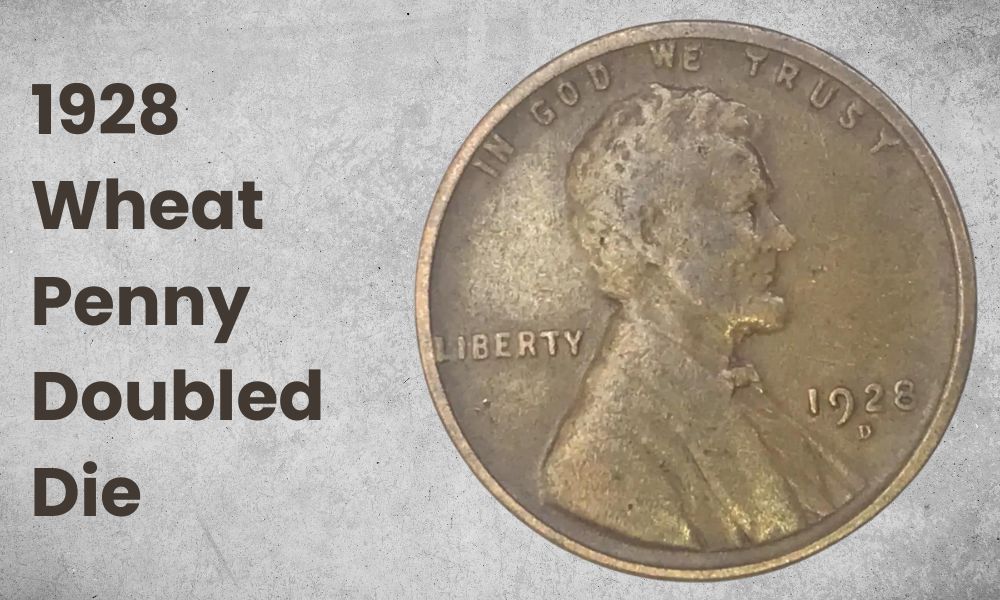
Doubled dies occur when a coin die strikes a coin twice at slightly different angles. Some 1928 Wheat Pennies show doubled die errors; others show a doubling of Lincoln’s eyelid, while some pieces have a doubling date. Also, numerous coins minted in Denver show doubling wheat stalks and the “E PLURIBUS UNUM” inscription on their reverse.
2. Off-Center Errors
The off-center error commonly occurs in all coin series. In fact, pieces with more off-center designs are scarcer, making them more valuable as well. Minor off-center pennies do not significantly increase a coin’s premium. However, the value goes higher when the strike is more than 5% off-center, as long as the date is still fully visible.
3. BIE Errors
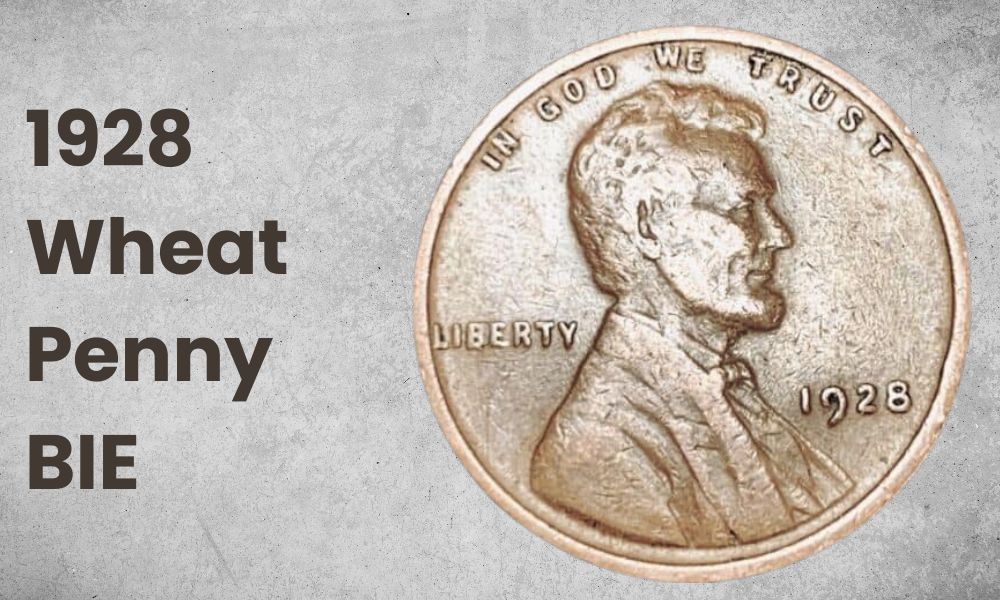
On the coin’s reverse, some 1928 Wheat Pennies have a thin vertical line between the “B” and “E” of the word “LIBERTY .”This kind of mint error is called a die crack, which happens when an overused die starts cracking. Cracks often occur in and around the design elements.
1928 Wheat Penny FAQs
1. How rare is a 1928 penny?
When checking the rarity of this piece, the 1928 Philadelphia Penny is rated “Abundant” since there were 134,116,000 struck. The initial large supply of these coins lessened over time because of their abundant usage in commerce.
2. What year is the rarest wheat penny?
The rarest wheat penny is the 1909 VDB. Technically, there are millions of wheat pennies available, and most of these are usually traded for three to five cents per piece. If you are searching for a specific date, it can be much more than that.
3. What penny is the million-dollar penny?
The finest 1943 S Lincoln Wheat Penny on a bronze planchet was acquired for $1 million by the co-chairman of the Texas Ranger’s baseball club, Bob R. Simpson. Generally, all Lincoln Cents issued in 1943 were supposed to be crafted with zinc-coated steel planchets.
4. How old is the rarest penny?
The rarest penny is the 1877 Indian Heady Penny which is worth $149,500. This specific piece is one of the rarest among all the Indian Head Pennies that were minted.
The demand for U.S. coinage was at an all-time low in 1877, and it was due to a lengthy recession. During this period, people did not bother saving pennies, so it’s extremely rare to find an uncirculated version that is in mint condition.
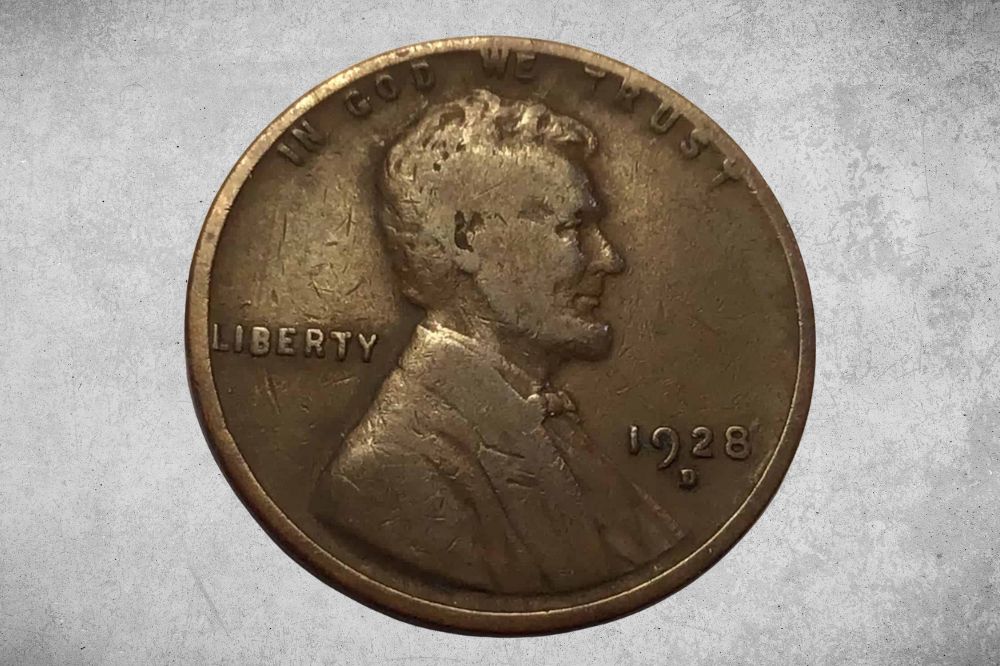
I have a 1928s penny! Where could I find the true value?